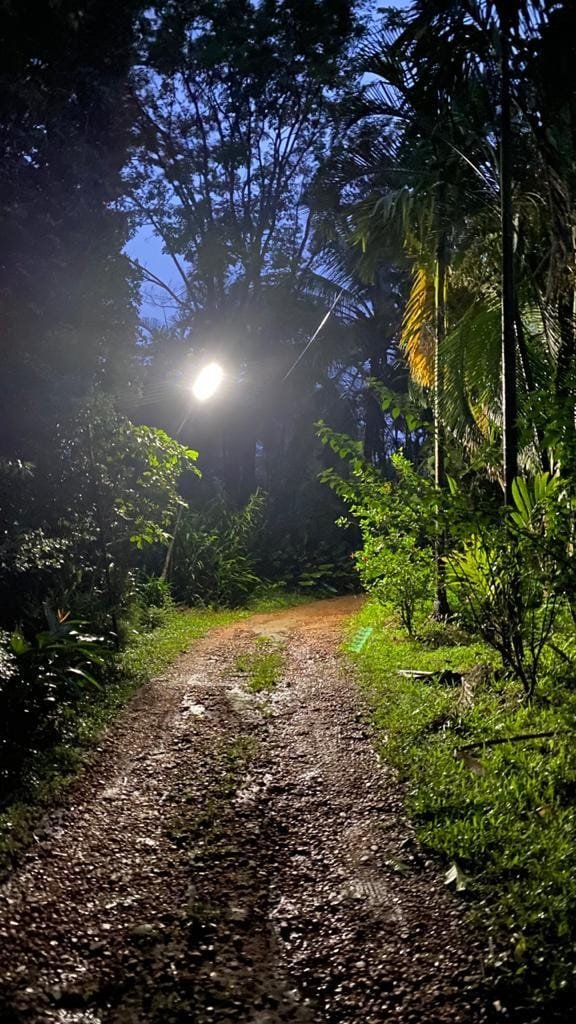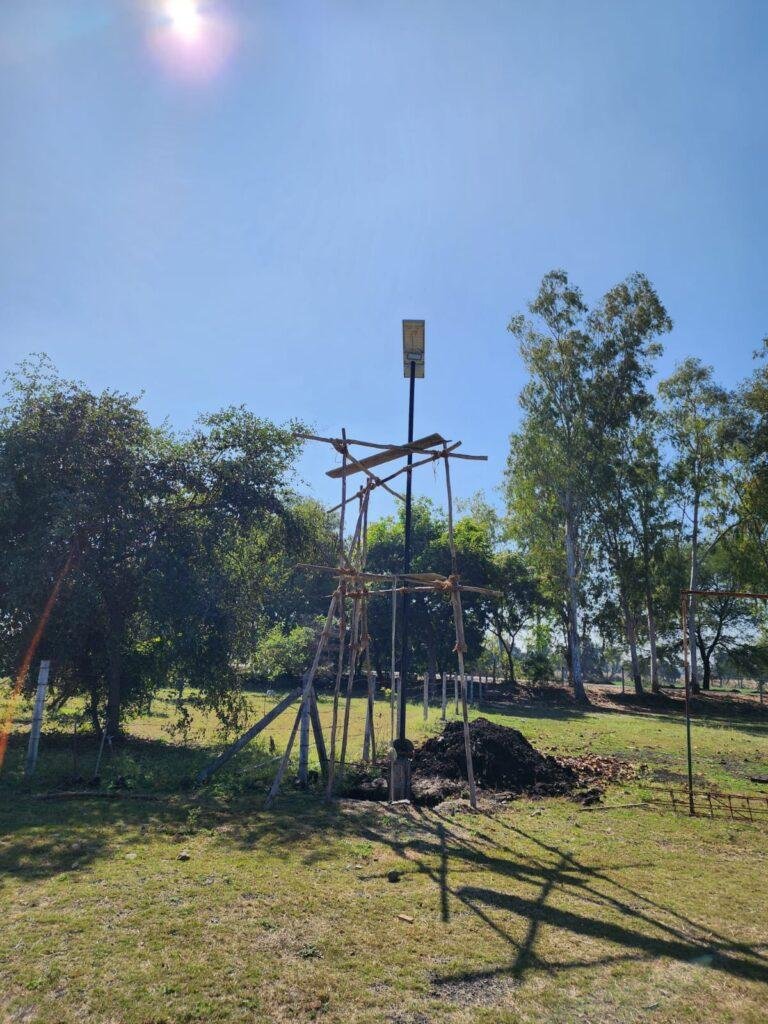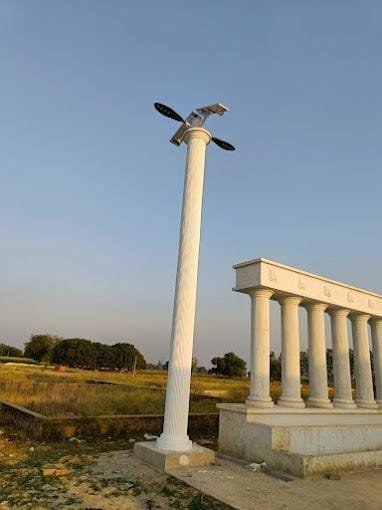Introduction
In recent years, there has been a growing need to find sustainable and cost-effective solutions for lighting in rural areas of India. One of the most promising innovations in this regard is solar street lights. Solar street lights offer numerous benefits, making them the ideal solution for illuminating rural areas. In this article, we will explore the advantages of solar street lights and how they can address the specific needs of rural communities in India.

Table of Contents
- The Importance of Efficient Lighting in Rural Areas
- The Advantages of Solar Street Lights
- Cost-Effectiveness
- Renewable Energy Source
- Reduced Dependence on the Grid
- Environmentally Friendly
- Low Maintenance
- Customizable Lighting Solutions
- Overcoming Challenges in Rural Areas
- Government Initiatives and Support
- Case Studies of Successful Implementations
- How Solar Street Lights Can Improve Safety
- Enhancing Livelihood Opportunities
- Educating and Empowering Rural Communities
- Solar Street Lights as a Catalyst for Development
- The Future of Solar Street Lights in India
- Conclusion
- FAQs
- Are solar street lights suitable for all types of weather conditions?
- How long do solar street lights last?
- Can solar street lights be used in areas with limited sunlight?
- Are solar street lights expensive to install?
- Do solar street lights require regular maintenance?
The Importance of Efficient Lighting in Rural Areas
Watch Youtube Video of all the Unboxings of Solar Street Lights | Click Here
Access to reliable and efficient lighting is crucial for the development and well-being of rural communities. In many remote areas of India, the lack of proper lighting infrastructure hinders progress in various aspects of life, including education, healthcare, and economic activities. Traditional lighting solutions, such as kerosene lamps, are not only expensive but also pose serious health and safety risks.

The Advantages of Solar Street Lights
Cost-Effectiveness
Solar street lights offer a cost-effective lighting solution for rural areas. While the initial installation cost may be higher compared to conventional street lights, solar street lights have minimal operational expenses. They rely on renewable solar energy, eliminating the need for expensive electricity bills. The long-term savings outweigh the initial investment, making solar street lights a financially viable option.
Renewable Energy Source
Solar street lights harness the power of sunlight, a clean and renewable energy source. India, being a tropical country with abundant sunshine, is an ideal location for solar energy utilization. By tapping into this renewable resource, rural areas can become self-sufficient in their lighting needs while reducing their carbon footprint.
Reduced Dependence on the Grid
Rural areas often face challenges in accessing the centralized power grid. Solar street lights operate independently, eliminating the need for grid connectivity. This independence ensures uninterrupted lighting, even in areas with frequent power outages. It also reduces the strain on the existing grid infrastructure, allowing energy to be directed to other essential services.
Environmentally Friendly
Solar street lights are environmentally friendly, as they produce zero greenhouse gas emissions. Unlike conventional street lights that rely on fossil fuels, solar street lights do not contribute to air pollution or global warming. By embracing solar energy, rural communities can contribute to a cleaner and healthier environment.
Low Maintenance
Maintaining lighting infrastructure in remote areas can be challenging and costly. Solar street lights have minimal maintenance requirements, reducing the burden on rural communities. The use ofLED technology in solar street lights further enhances their durability and longevity, reducing the need for frequent replacements and repairs. This low-maintenance aspect ensures that the lighting system remains functional and reliable for an extended period.
Customizable Lighting Solutions
Solar street lights offer customizable lighting solutions that can be tailored to the specific needs of rural areas. The brightness and intensity of the lights can be adjusted to suit different settings, such as village streets, marketplaces, or community centers. This flexibility allows for optimal lighting conditions, ensuring visibility and safety during nighttime activities.

Overcoming Challenges in Rural Areas
Implementing lighting solutions in rural areas comes with its own set of challenges. However, solar street lights are designed to overcome these obstacles. They can be installed in remote and off-grid locations, providing lighting in areas that are otherwise difficult to reach. Moreover, solar street lights require minimal infrastructure, making them suitable for regions with limited resources and technical expertise.
Government Initiatives and Support
Recognizing the importance of sustainable lighting in rural areas, the Indian government has launched various initiatives and programs to promote the adoption of solar street lights. These initiatives include subsidies, financial incentives, and awareness campaigns to encourage rural communities to embrace solar energy. The government’s support plays a crucial role in the widespread implementation of solar street lights across the country.
Case Studies of Successful Implementations
Numerous success stories highlight the effectiveness of solar street lights in rural areas of India. For example, in the state of Rajasthan, solar street lights have been installed in several villages, transforming the lives of the residents. The availability of reliable and bright lighting has improved safety, enhanced economic activities, and empowered the community as a whole. Similar success stories can be found in other states, showcasing the positive impact of solar street lights.
How Solar Street Lights Can Improve Safety
Safety is a significant concern in rural areas, especially during the night. Solar street lights play a crucial role in enhancing safety by illuminating streets, pathways, and public spaces. Well-lit areas discourage criminal activities and provide a sense of security for residents. Additionally, solar street lights can be equipped with motion sensors and CCTV cameras, further bolstering the security infrastructure of rural communities.
Enhancing Livelihood Opportunities
Access to reliable lighting extends the working hours for businesses and small-scale enterprises in rural areas. With solar street lights, shops, markets, and street vendors can operate for longer hours, attracting more customers and generating higher income. This increased economic activity contributes to poverty alleviation and overall development in rural communities.
Educating and Empowering Rural Communities
Solar street lights serve as more than just lighting infrastructure. They become symbols of progress and innovation, inspiring rural communities to embrace sustainable practices. Implementing solar street lights creates opportunities for educating residents about renewable energy and its benefits. This knowledge empowers individuals to become active participants in the transition towards a greener and more sustainable future.
Solar Street Lights as a Catalyst for Development
The installation of solar street lights in rural areas has a ripple effect on overall development. Improved lighting infrastructure attracts investments, facilitates transportation, and boosts tourism. It also enhances the quality of life for residents, making rural areas more attractive for habitation and encouraging urban migration reversal. Solar street lights act as catalysts for holistic development, transforming rural landscapes and improving the well-being of communities.
The Future of Solar Street Lights in India
The future of solar street lights in India looks promising. With increasing awareness of environmental issues and the need for sustainable solutions, there is a growing demand for solar-powered lighting systems. Technological advancements, such as improved battery storage and more efficient solar panels, are further driving the adoption of solar street lights. As the government continues to prioritize renewable energy and rural development, solar street lights will play an increasingly vital role in lighting up the rural areas of India.
Conclusion
Solar street lights offer a viable and sustainable lighting solution for rural areas in India. Their cost-effectiveness, reliance on renewable energy, reduced dependence on the grid, and low maintenance make them an ideal choice for illuminating remote communities. Solar street lights not only improve safety and enhance livelihood opportunities but also empower rural communities and contribute to overall development. With government support and favorable initiatives, the future of solar street lights in India is promising, ensuring a brighter and more sustainable future for rural areas.

FAQs
- Are solar street lights suitable for all types of weather conditions?
- Yes, solar street lights are designed to withstand various weather conditions, including rain, extreme heat, and cold temperatures.
- How long do solar street lights last?
- Solar street lights typically have a lifespan of 20 to 25 years, depending on the quality of components used.
- Can solar street lights be used in areas with limited sunlight?
- Yes, solar street lights can still function in areas with limited sunlight. They are equipped with efficient solar panels and battery storage systems to ensure continuous operation.
- Are solar street lights expensive to install?
- While the initial installation cost may be higher compared to conventional street lights, solar street lights offer long-term cost savings due to their minimal operational expenses.
- Do solar street lights require regular maintenance?
- Solar street lights have low maintenance requirements. Periodic cleaning of solar panels and battery inspections are recommended to ensure optimal performance and longevity.
